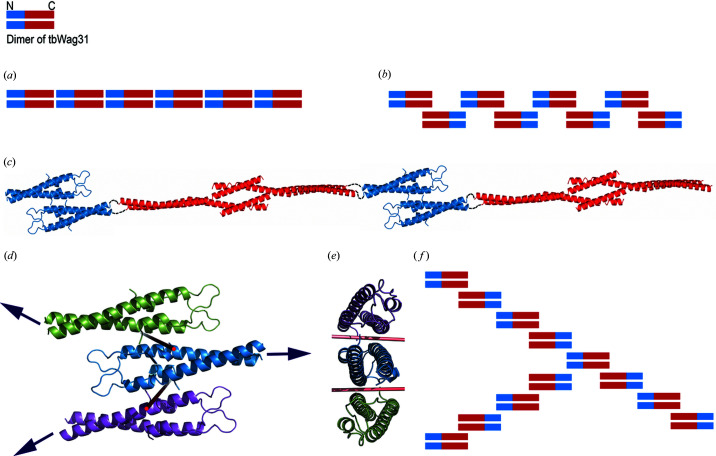Figure 5.
A proposed model of Wag31 filament assembly. (a), (b) Two theoretically alternative possible modes of self-assembly of Wag31, using (a) pure translational repeat operations and (b) twofold-symmetry-related repeat operations, are shown. (c) Ribbon diagrams of the tetramers of N-terminal N-Wag31 (blue, this work) and the C-terminal domain of bsDivIVA (red, Oliva et al., 2010 ▸) are shown, joined by linker regions as dashed lines, as a theoretical filament. The linker region is ∼20 residues long in bsDivIVA, and ∼100 residues long in tbWag31. (d), (e) Two views of a theoretical hexamer composed of three dimers of N-Wag31 (ribbons in green, blue and magenta). The twofold axes of rotation are shown as red rods. (f) A theoretically possible mode of 3-way branching in tbWag31 filament.

